Last Thursday, creative renaissance man Eli Russell Linnetz brought Venice Beach to Milan for the runway debut of his acronymic label, ERL. There, inside the courtyard of a Baroque palazzo, UV light bathed the audience while sounds of crashing waves looped in the background. Eventually, the show began, opening with one of the many surfers Eli knows from his beachside hometown. Clad in a silver lurex top, complete with padded shoulders, the floppy-haired beach bum set the tone for the show: a fairytale story of surfer boys playing dress up on a rich-kid budget. Think glistening trews, sequinned surfboard fin bags and tailoring of wizardly proportions.
Like everything Eli has done, Americana and dude culture lay at its core, but this occasion was a leap nonetheless. Hot on the heels of his guest collection for Dior Men’s SS23, the multi-hyphenate – who eschews the term designer – substituted his traditional method of presentation through heady self-shot lookbooks for a higher-production affair beyond the safety of his own studio. That said, Eli stepped up, delivering an ebullient blend of youth, masculinity and subculture that even the stuffiest of Pitti’s old school couldn’t help but smile at. Guys dressed as the Statue of Liberty, sequinned top hats and behemoth skate shoes served as reminders that, sometimes, fashion should be fun.
Subscribe to i-D NEWSFLASH. A weekly newsletter delivered to your inbox on Fridays.
Now, in the prime of his career, Eli looks set for big things. Of course, he’s already an incredibly decorated name, having cut his teeth first as a child actor, before later working on Kanye West music videos and the Saint Pablo tour, not to mention Lady Gaga’s Las Vegas residency. Did we mention he’s also a major producer, counting Ye, Kid Cudi and Teyana Taylor as former clients? Oh, and A$AP Rocky’s Met Gala blanket in 2021? That was ERL. Indeed, the University of Southern California alum has done a lot for a 30-something.
Lucky for us, we caught up with Eli a day before his show to hear more about his collection’s inspirations, working with Gaga and Ye, and why streetcasting is a must.
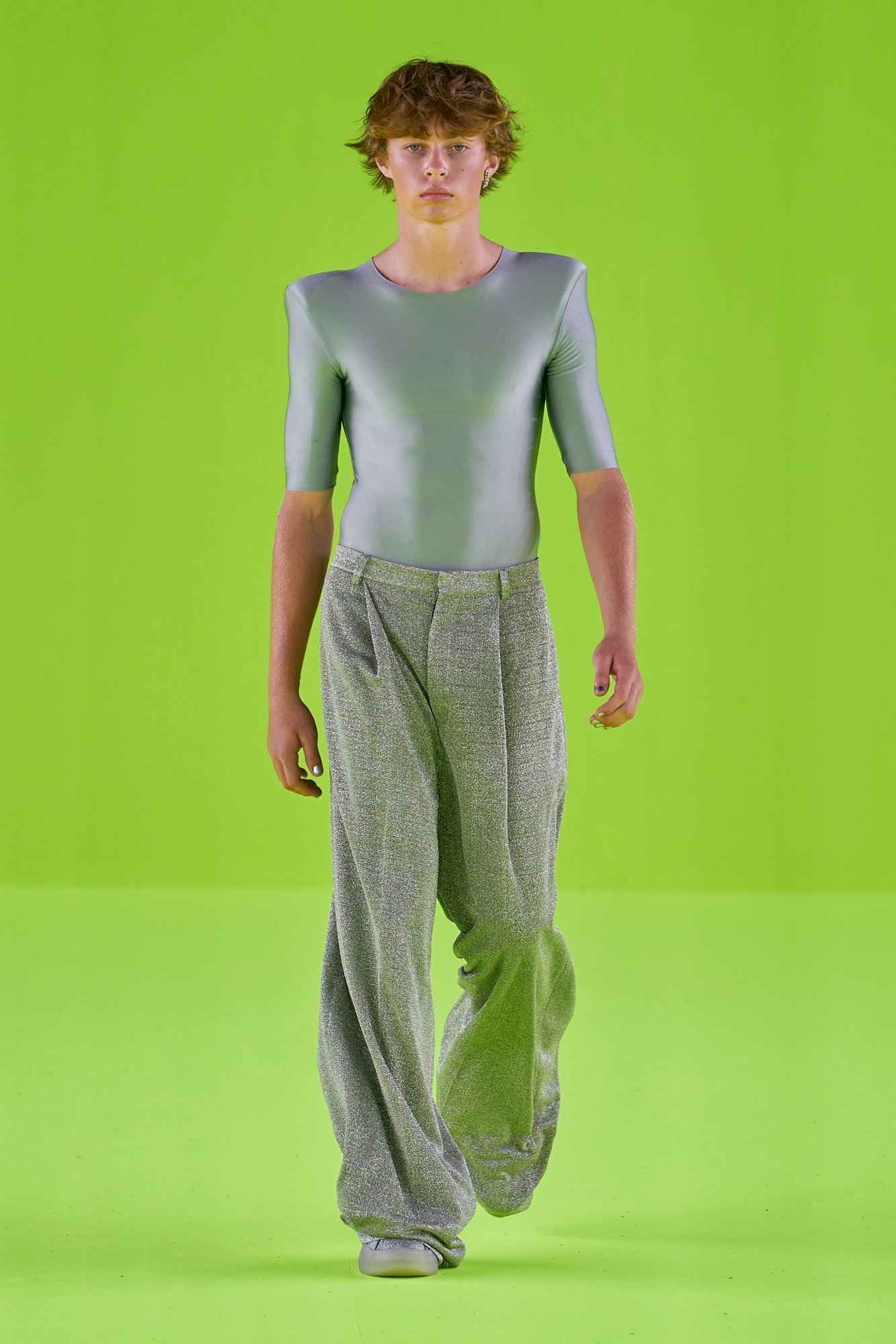
You mentioned that the show is a different direction for you. Was it that it was more tailored?
Yeah, especially after working with Dior, I fell in love with this other side of fashion I hadn’t really explored. With it being Pitti Uomo, it was kind of a perfect opportunity. I approached it like an art piece, letting go of any attachments to previous ideas or conceptions I had of ERL. The storyline takes place about 100 years from now in Florence, and the city’s underwater. So, a bunch of surfers from California come to surf, and they go to this rich ambassador’s house, masquerading as rich people to get into a party. It’s super playful. We flew most of the models in from Venice Beach.
That’s one of the things about you: you always do the casting yourself.
Always. We have been casting this for a few months. When we were first in Italy, that was the first priority. Because for me, it’s more important than the clothes. I care about the people, you know. Some of them I’ve been working with since season zero, they’re my friends from Venice Beach.
What is it you look for when casting?
Just authenticity. There’s just something about being a surfer; you carry yourself different and the clothes different.

Could you tell us about the silver military tunic?
Yeah, it features all these objects that I found in LA flea markets and thrift stores. The patches are from different American wars, from Vietnam to wars in the Philippines — American stations in different countries. I imagined this outfit being in the closet of a weird general who’s collected all these awards and pins from different generations as like an “Oh, we’re the ultimate conquerors.” They’re all antique trims from the 20s and 30s. The tassels are just old upholstery. The beading, it’s all antique.
You’re quite the magpie. Were there any particular things you archived in the leadup to this show?
Yeah, army antique fabrics, which is why I think they have a lot of brocades and weird trims. I’ve been like a little bird, just looking for things. You know, I have done so many T-shirts and stuff; I was just looking for something weird.
So, you archive and then elevate?
Yeah, I haven’t bought clothes in a few years; all I do is obsessively buy antiques.

What about those fat sneakers? They are the fattest fat shoe yet!
Yeah, I’ve been working on them for two years. We did one for Dior and it sold out like crazy, so I was like, “We have to put them in the show.”
With the bedazzled laces, as well.
Yeah, super fun. We’re still fitting all the clothes – everything’s super lightweight. I’m usually known for doing bold colours and prints, so I want to challenge myself. It’s very subtle colours.
Do you think the Dior gig helped you move into that?
I feel like I always loved that. Working at Dior, actually, was an opportunity for me to explore it. Kim was super down with it; he’s super cool.
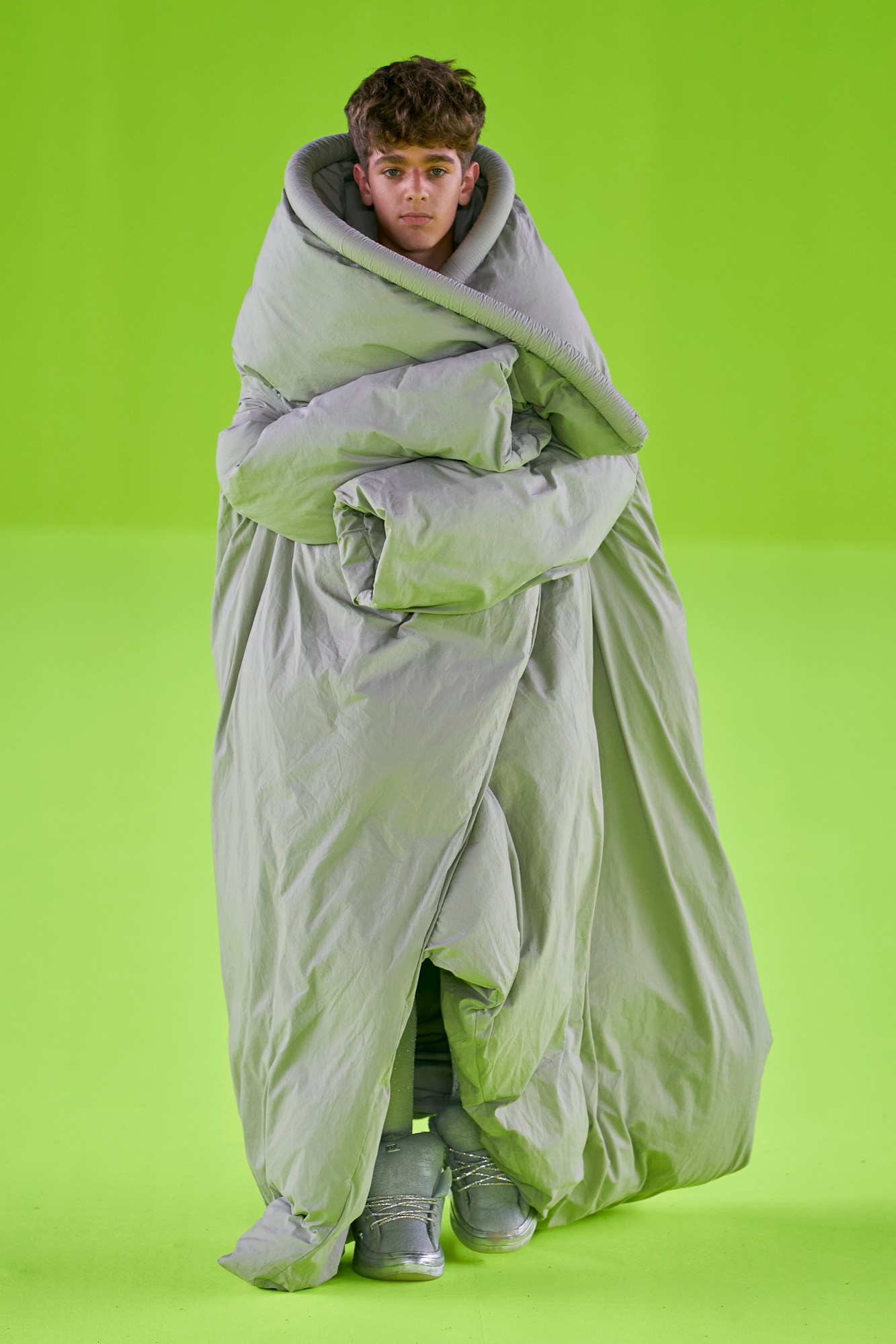
You’re part of the Dover Street Market Paris fashion incubator. Could you tell us about that?
Yeah, I mean, [ERL’s] team is really small – like three people. I met Adrian Joffe with Ronnie Newhouse. We were working on a fragrance campaign for Comme des Garçons, and Adrian, Ronnie, Rei and I all became friends. I was doing the graphic design for the fragrances. I threw around the idea of starting a clothing line, and they were like, “Let’s do it.”
Before launching your brand, you worked with Kanye on “Fade”, “Famous” and the Saint Pablo Tour. How did your experiences help you develop as a creative?
Similar to Dior, there was so much freedom to create that it really pushed you into places you never go in. Especially with Lady Gaga, too. She really pushes the boundaries.
Any favourite projects with Gaga?
Yeah, the main one we did was for the Enigma section of her Vegas residency. That was like creating from scratch. She sent me amazing ideas she wanted to see executed, so that was exciting.
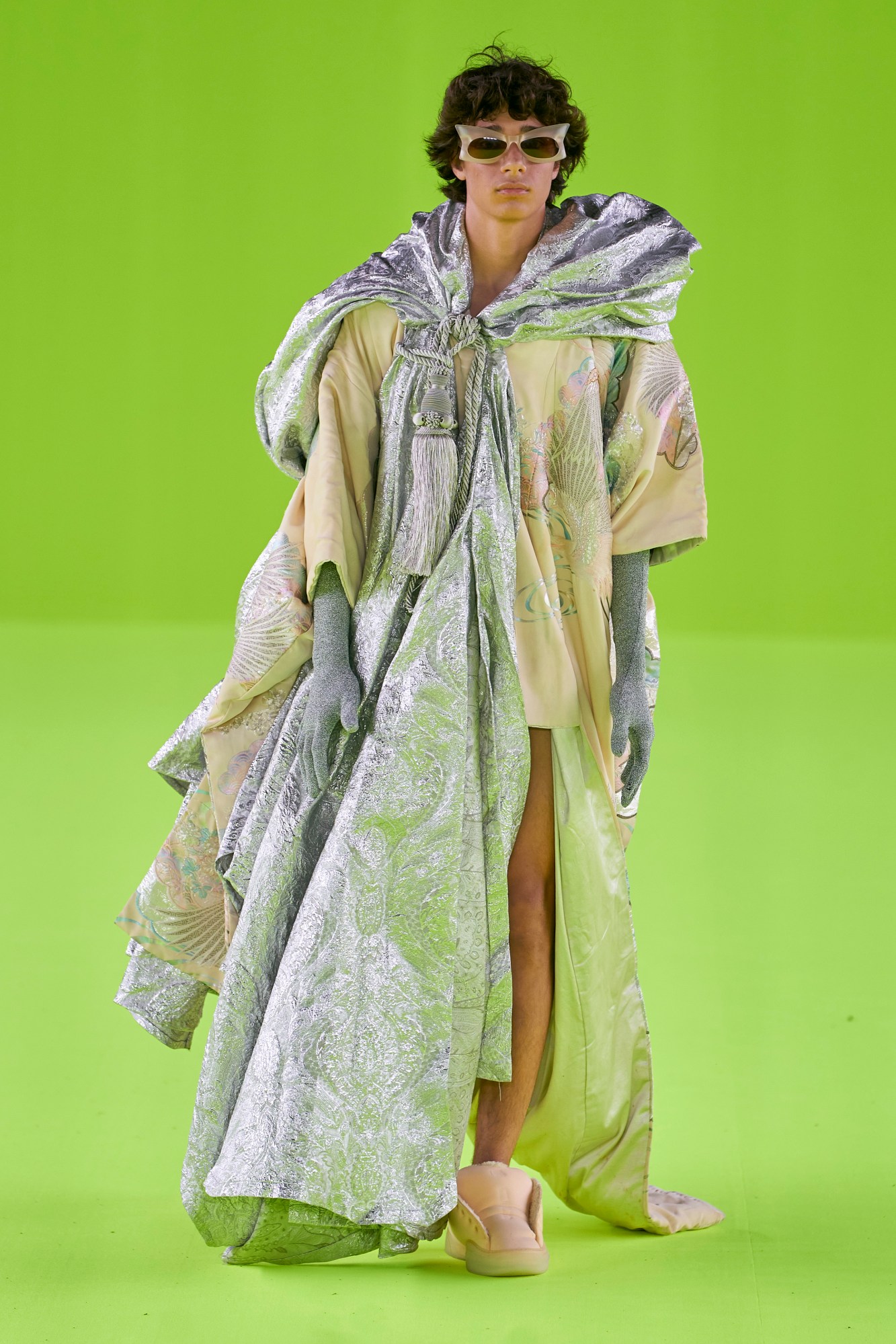
Was your role in that mostly stage design?
I did both. We wrote the actual storyline of the show together and we did the stage design with her.
You studied film and screenwriting. Was fashion ever the end goal?
No, it was super organic. Since I was a kid, I was always playing dress up, which is how I approach a collection now. Especially growing up watching musicals and old films, costume design was so important in comparison to films today. Back then it was designed with intention. So, I think it’s always just been a part of my conscious.
Looking at the collection now, there’s a theatrical air to the clothes. They’re storytelling.
Yeah, I feel like it’s silly to just make a pair of pants without it saying something or telling a little story. Otherwise, you don’t need to come and buy pants from me.
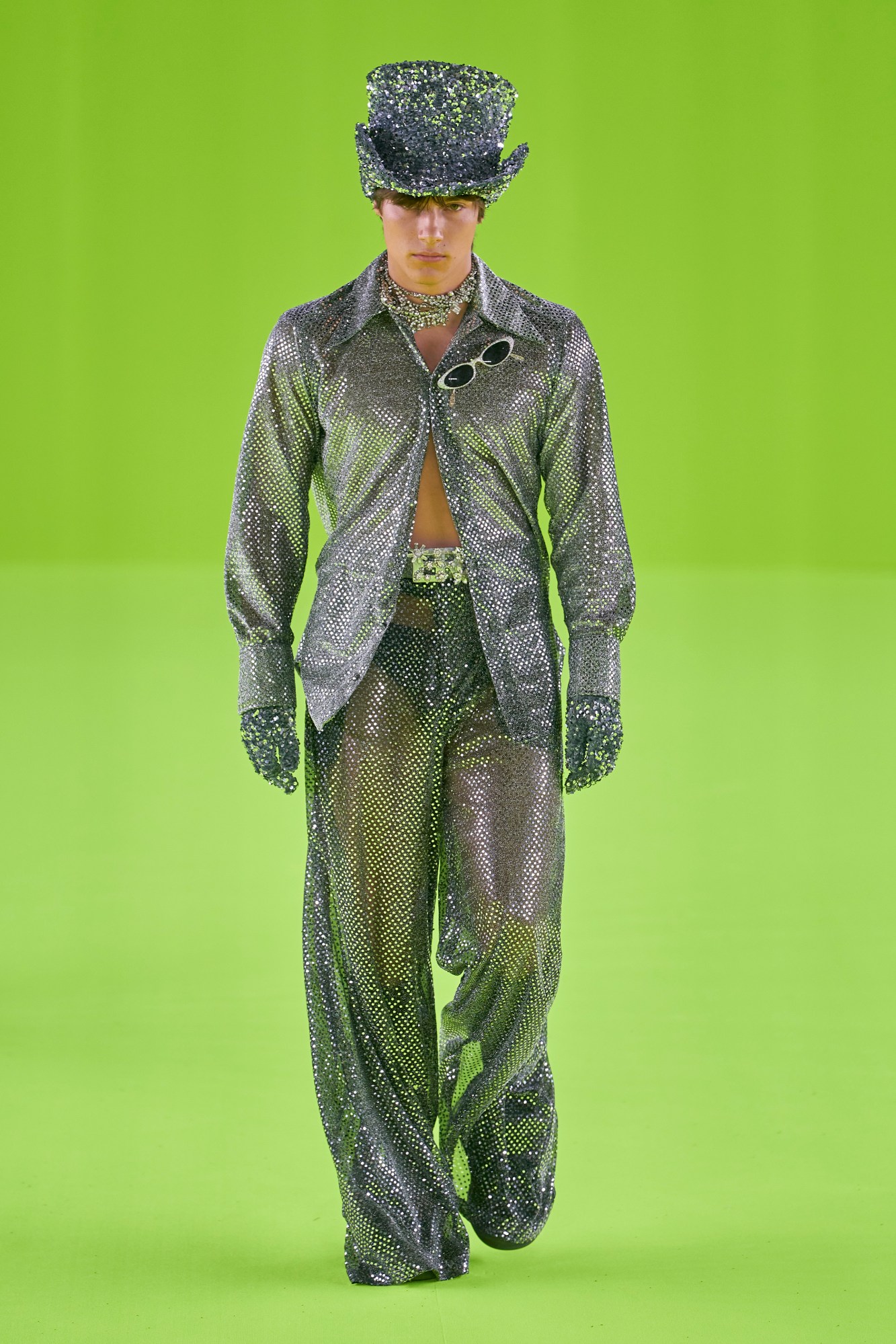
Themes of masculinity, boyhood and the sweat-stained surfers are integral to your work. Will they continue to feature?
Of course. I think everything I do has that vibe of Venice Beach. And it’s always an expression of myself and the people I grew up with.
When did you first begin your journey to becoming a creative polymath?
I guess in school. I would always take like ten extracurriculars. I was never satisfied with just doing one thing. Being in both choir and wrestling, it never made sense.
Your references are very varied. In your photography, there’s nods to Peter Berlin in there, but then there’s also the LA lifestyle. Were any of those present in this?
Definitely, I mean, I’m still going to shoot it the same way. I think that’s always the energy in my work. It will never change.
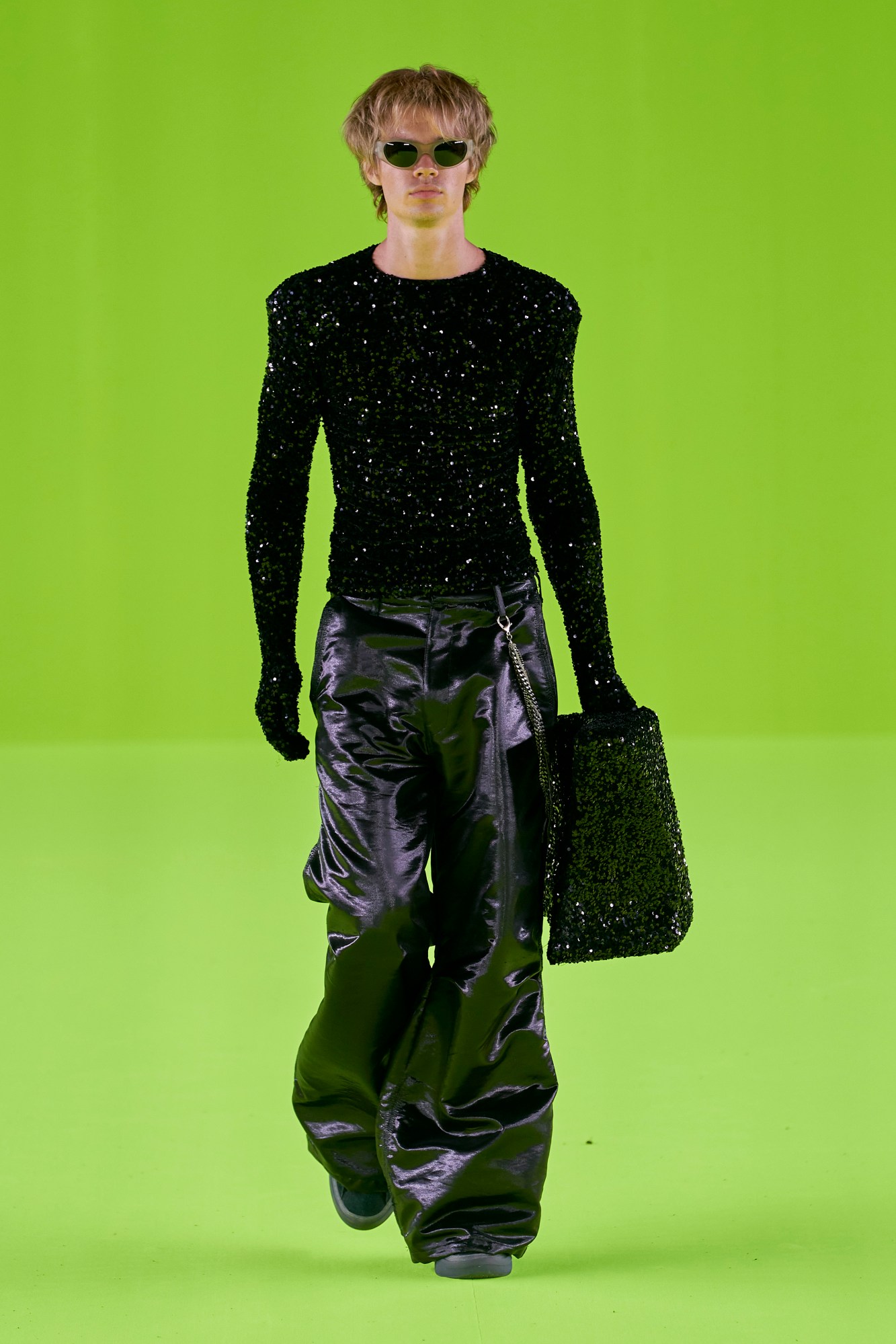
Credits
Images courtesy of Spotlight
